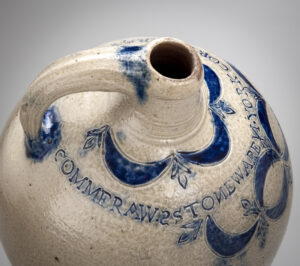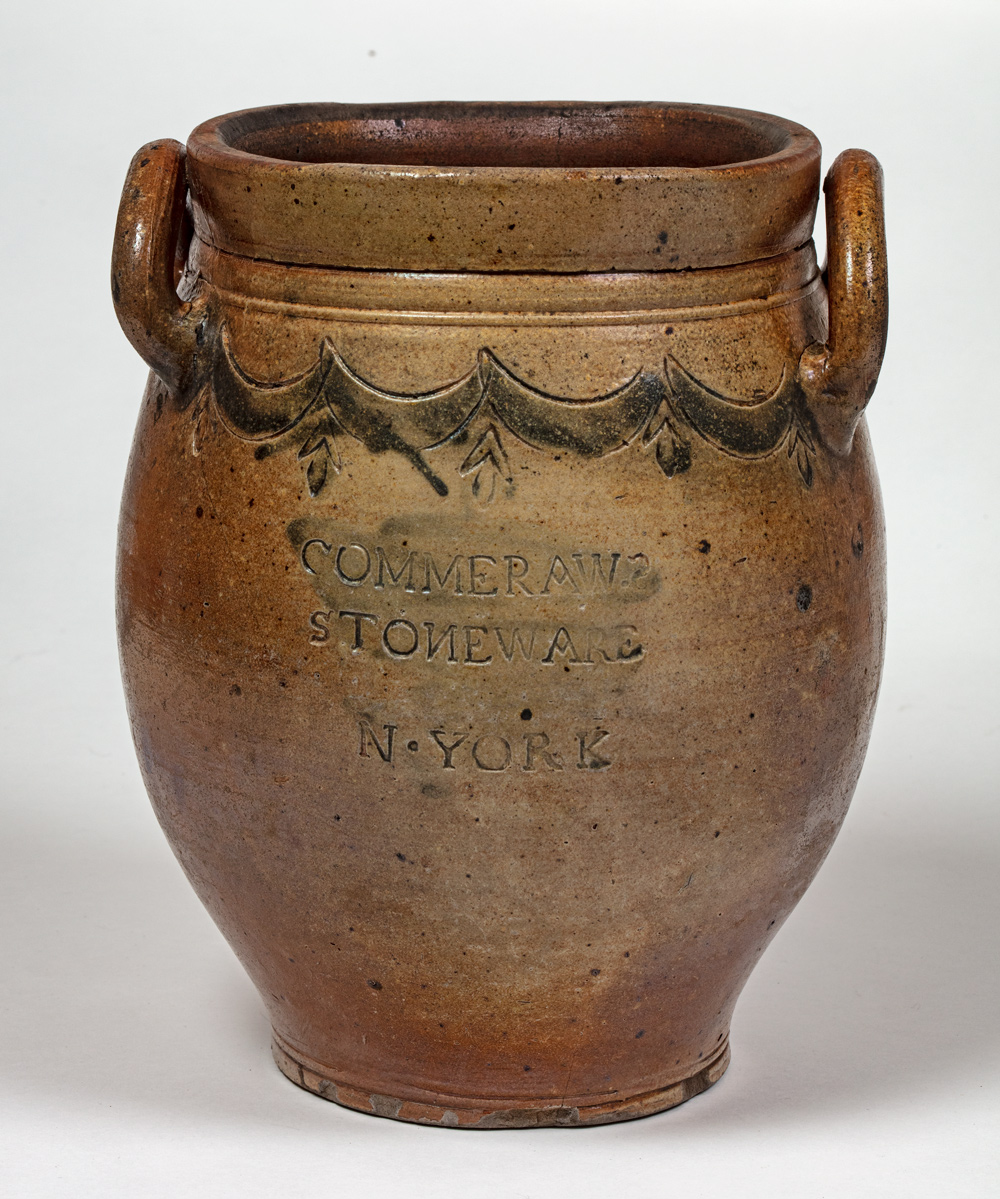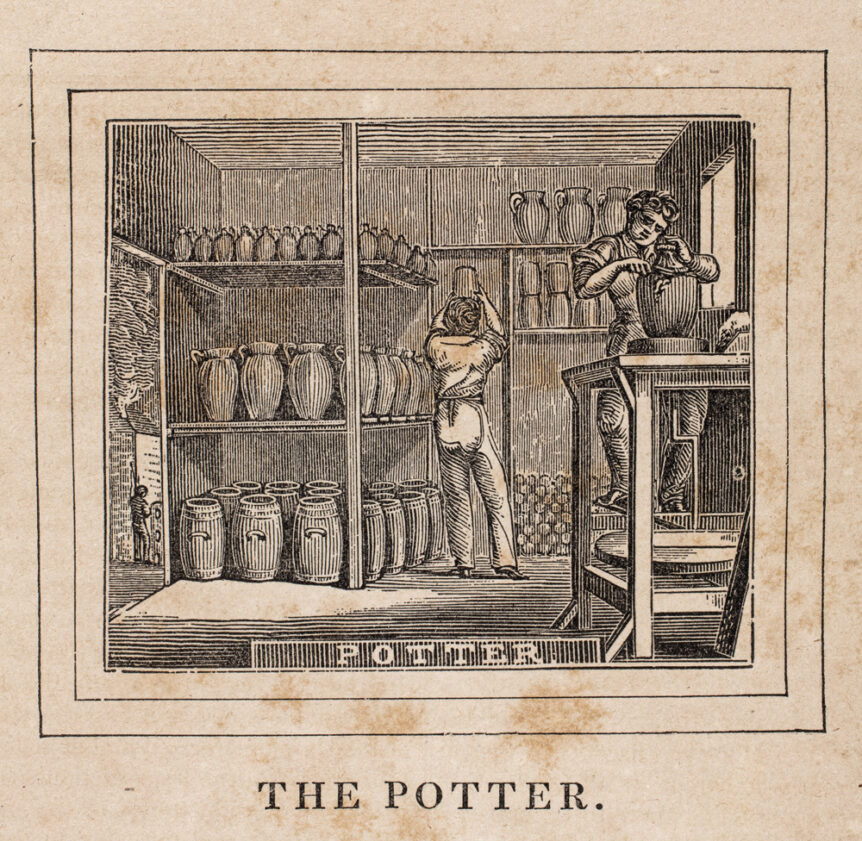
For nearly two hundred years, from his death in 1823, New York potter Thomas Commeraw was out of sight. It didn’t help that his odd last name was spelled some sixteen different ways in census records, newspaper articles, and on his pots themselves. In the digital age—2010 to be exact—it finally became possible to positively identify him: as a prosperous free Black craftsman with a manufactory in Corlears Hook employing seven people, an enterprise that provided stiff competition to the legacy affairs of Pot Baker’s Hill in lower Manhattan.
In this episode of Curious Objects, Benjamin Miller speaks again with Allison Robinson, who previously appeared on the podcast to discuss Depression-era children’s dolls sewn under the aegis of the Works Progress Administration, and is now a postdoctoral fellow at the New-York Historical Society and co-curator of the exhibition Crafting Freedom: The Life and Legacy of Free Black Potter Thomas W. Commeraw.

The twenty-two salt-glazed stoneware pots on view, ranging in size from inkwells to several-gallon grain jars, and which were shipped as far afield as South America and Europe, were thrown and fired using traditional Germanic methods, but boast unconventional decoration. Commeraw swapped out the commoner floral motifs of the period for the Federal style’s swags and tassels, thereby stamping his utilitarian pots—Robinson describes them as “the Tupperware of the period”—with luxurious aspirations.
Commeraw met with triumph and disaster by turns during his fifty years. He was born into slavery around 1771, and manumitted in 1778. He established his business in 1797, which prospered until the War of 1812, after which a series of financial and legal setbacks left him and his family with nothing, and in 1820 they joined the first voyage of the American Colonization Society to Sierra Leone. His wife died of malaria during the voyage, and after a couple of years scraping out a meager existence in West Africa, Commeraw returned to Baltimore, where he died in 1823.
“His life is one that was filled with so many obstacles, from birth to death, but what is so admirable about his story is that you’re seeing someone who is constantly fighting for himself and for others to try to do what’s best,” says Robinson.
Allison Robinson is the Mellon Foundation Postdoctoral Fellow in Women’s History and Public History at the New-York Historical Society. In this role she co-curated Title IX: Activism On and Off the Field, Crafting Freedom: The Life and Legacy of Free Black Potter Thomas Commeraw, and Kara Walker: Harper’s Pictorial History of the Civil War (Annotated). She also contributed research and text to the landmark exhibition Black Dolls and is Editor-in-Chief of the blog Women at the Center. Prior to joining the New-York Historical Society, Robinson worked at Thomas Jefferson’s Monticello, James Madison’s Montpelier, Virginia Humanities, the Historic New Orleans Collection, and the award-winning scholarly and community research initiative the Colored Conventions Project. Robinson received her PhD in history from the University of Chicago and an MA from the Winterthur Program in American Material Culture.

